Some buildings don’t just stand—they stun. From ancient temples to modern skyscrapers, these architectural wonders capture our imagination and inspire us to travel thousands of miles just to see them in person. Whether you’re an architecture buff, history lover, or simply someone who appreciates beauty, these remarkable structures offer unforgettable experiences that no photograph can truly capture.
1. Sagrada Família’s Unfinished Symphony
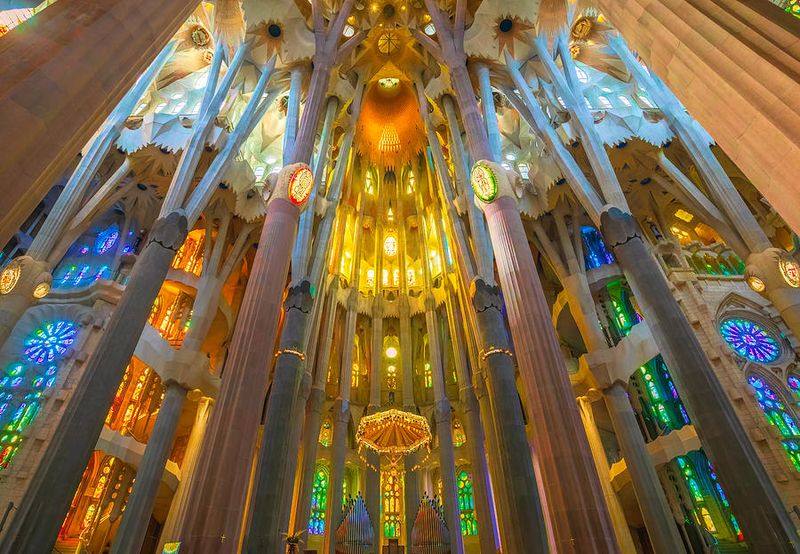
Antoni Gaudí’s masterpiece has been under construction since 1882, yet remains Barcelona’s most visited landmark. The basilica’s organic forms mimic nature—columns branch like trees, facades tell biblical stories through sculpture, and colorful stained glass bathes interiors in rainbow light.
Walking inside feels like entering a stone forest where mathematics and spirituality merge. Current plans aim for completion in 2026, marking the centenary of Gaudí’s death.
Fun fact: Gaudí is buried in the crypt of his own unfinished cathedral, forever part of his greatest creation.
2. Taj Mahal’s Marble Love Letter
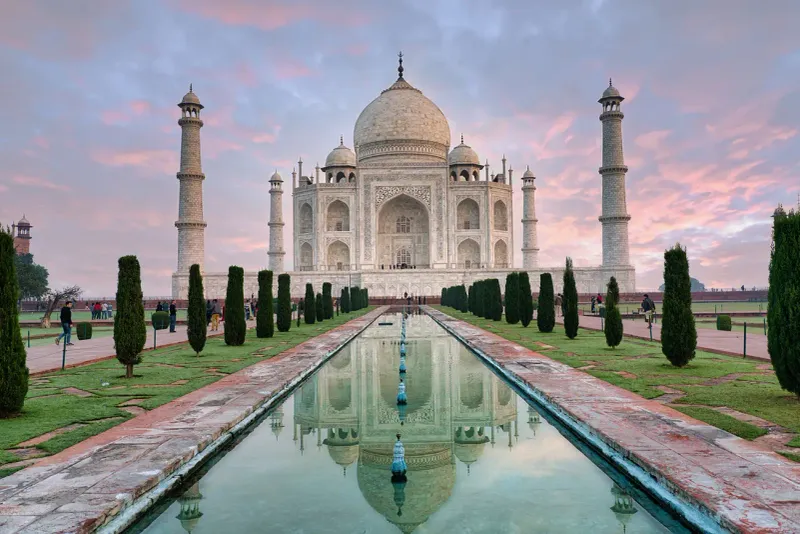
Emperor Shah Jahan’s tribute to his beloved wife Mumtaz Mahal stands as history’s most extravagant declaration of love. Rising from reflective pools, this perfectly symmetrical ivory-white marble mausoleum changes appearance throughout the day—pink at dawn, dazzling white at noon, golden at sunset.
Twenty thousand artisans spent 22 years creating its delicate inlays of semi-precious stones forming floral patterns. The four identical facades frame a central dome reaching 240 feet skyward.
The Taj appears to float during full moons, creating a mystical experience worth planning your visit around.
3. Fallingwater’s Natural Harmony
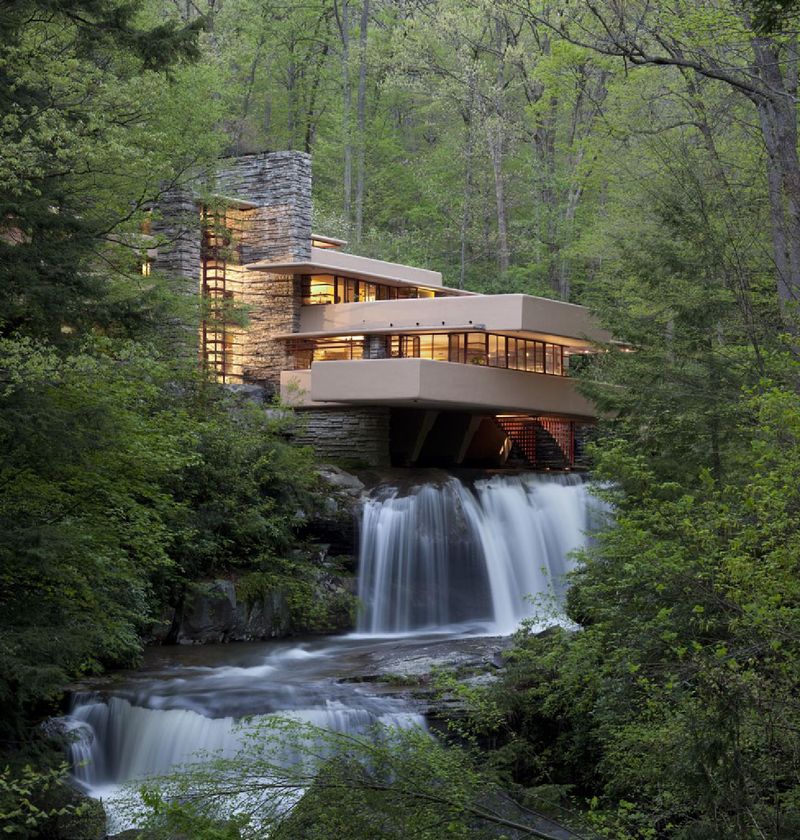
Frank Lloyd Wright’s masterpiece doesn’t just sit in nature—it becomes part of it. Built directly atop a waterfall, this Pennsylvania home features cantilevered concrete terraces that seem to float above Bear Run stream, with water sounds echoing throughout the house.
Completed in 1939 for the Kaufmann family, Fallingwater exemplifies Wright’s organic architecture philosophy. Local sandstone walls mirror surrounding rock formations, while extensive glass dissolves boundaries between inside and outside.
The home’s daring engineering was controversial—contractors doubled the steel reinforcement against Wright’s wishes, a decision later proven wise when structural analysis revealed the original design would have collapsed.
4. Sydney Opera House’s Soaring Sails
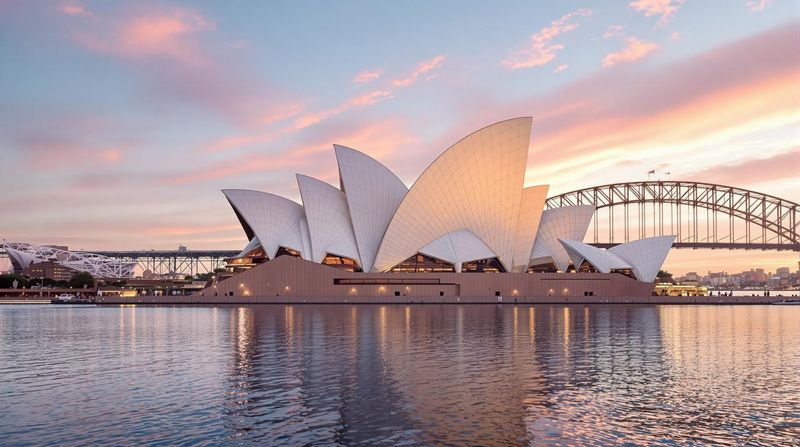
Rising from Sydney Harbour like a fleet of ships catching the wind, Jørn Utzon’s masterpiece nearly ended his career before making him immortal. The Danish architect’s innovative design—featuring precast concrete shells covered in over one million ceramic tiles—was initially dismissed as unbuildable.
Engineering challenges delayed completion by a decade and drove Utzon to resign before seeing his vision completed. Today, the building hosts over 1,500 performances annually while serving as Australia’s most recognizable symbol.
The tiles create a mesmerizing effect as they catch different light throughout the day, appearing either brilliant white or subtly patterned depending on viewing angle and weather.
5. Neuschwanstein Castle’s Fairy Tale Reality
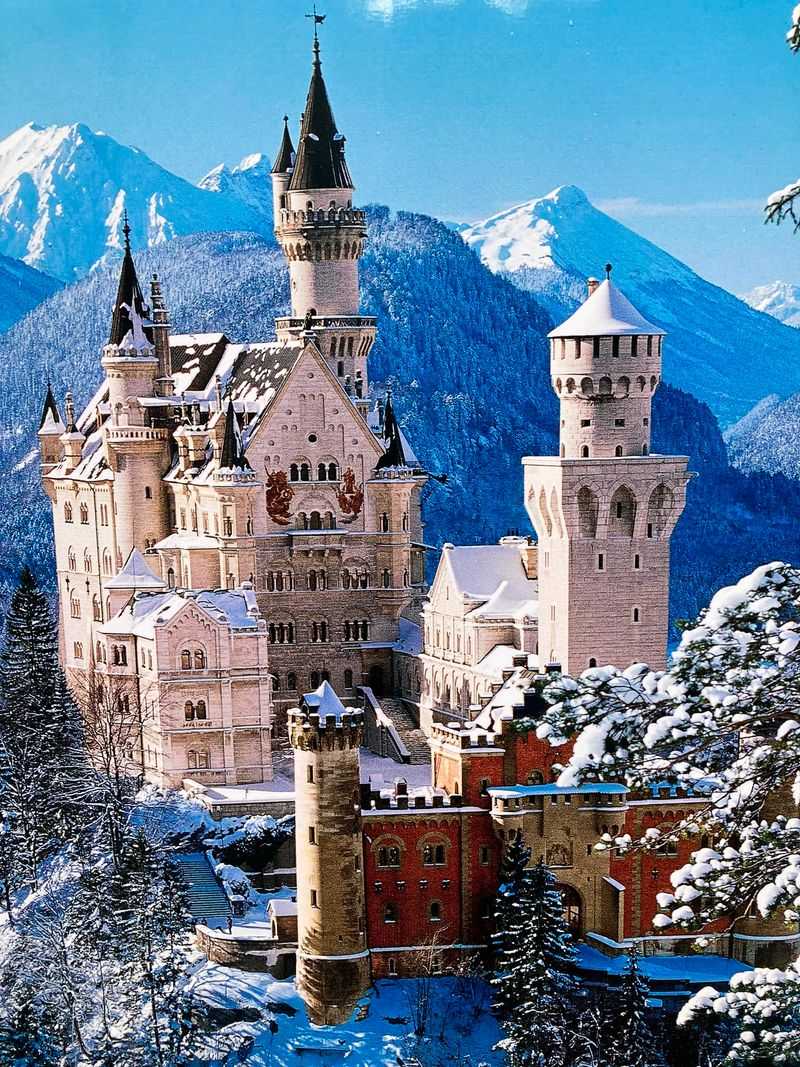
Perched dramatically on a rugged hill in Bavaria, this 19th-century castle looks like it leaped straight from a fairy tale—which is why Walt Disney chose it as inspiration for Sleeping Beauty Castle. King Ludwig II commissioned it as a personal retreat and homage to Richard Wagner, whose operas inspired many of the castle’s lavish interiors.
The shy king only spent 11 nights here before his mysterious death. Construction halted immediately, leaving many rooms forever unfinished.
Despite its medieval appearance, Neuschwanstein was surprisingly modern, featuring central heating, running water, flush toilets, and even a telephone line—luxuries most actual medieval castles never enjoyed.
6. Hagia Sophia’s Spiritual Crossroads
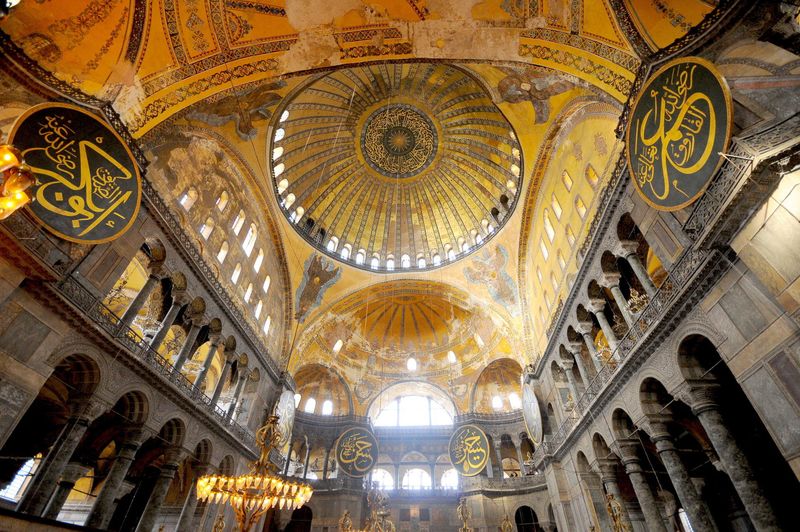
For nearly 1,500 years, this architectural marvel has witnessed history’s most dramatic religious transformations. Originally a Byzantine cathedral boasting the world’s largest dome for nearly a millennium, it later served as an Ottoman mosque and then a museum before returning to mosque status in 2020.
Visitors still gasp upon entering the vast interior space, where 40 windows encircling the base of the dome create the illusion of a ceiling floating on light. Ancient Christian mosaics now share space with Islamic calligraphy in a unique visual dialogue.
Engineers placed forty ribs of lightweight materials in the dome and invented a special mortar that hardened in days rather than months.
7. Palace of Versailles’ Golden Opulence
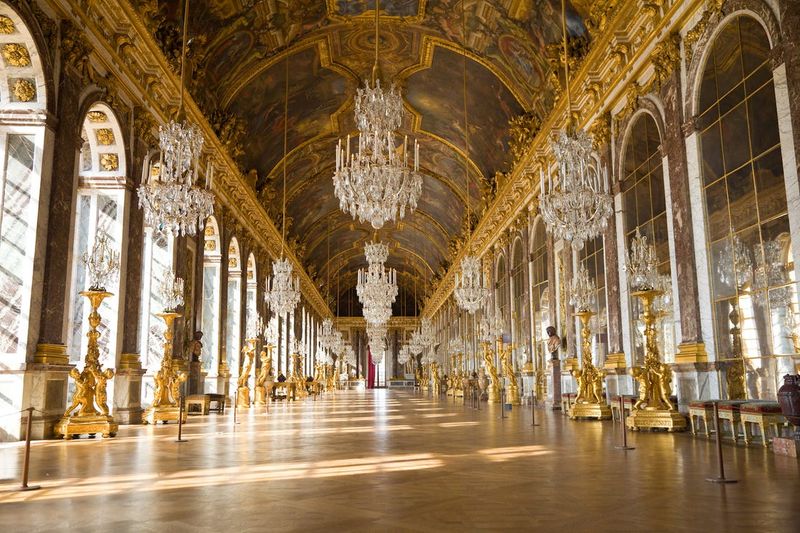
What began as Louis XIII’s hunting lodge transformed into history’s most extravagant palace under his son, the Sun King. The numbers are staggering: 700 rooms, 1,250 fireplaces, 67 staircases, and gardens stretching across 800 hectares with 1,400 fountains.
The Hall of Mirrors, where the Treaty of Versailles was signed ending World War I, features 357 mirrors specifically designed to reflect garden views and demonstrate France’s manufacturing prowess. Royal apartments drip with gold leaf and showcase furniture crafted by generations of master artisans.
Maintaining the palace required one-third of France’s national income during Louis XIV’s reign—a financial burden that contributed to the French Revolution.
8. St. Basil’s Cathedral’s Psychedelic Domes
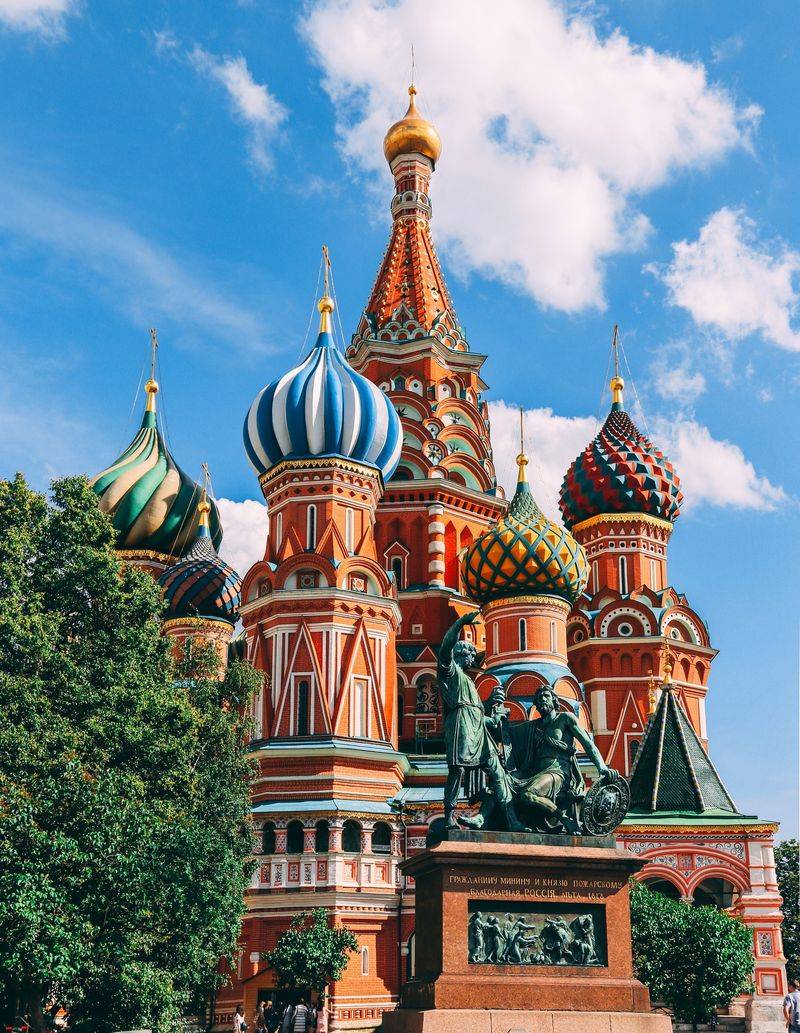
Moscow’s most recognizable landmark resembles a cluster of giant, colorful ice cream cones swirling toward heaven. According to legend, Ivan the Terrible blinded the architects upon completion to ensure they could never create anything more beautiful.
Originally painted white with gold domes, the cathedral’s kaleidoscopic color scheme came later. The building’s layout follows a complex religious symbolism—eight churches surrounding a central tower represent eight significant victories in Ivan’s conquest of Kazan.
Despite its whimsical exterior, St. Basil’s interior is surprisingly maze-like and intimate, with narrow corridors connecting small chapels rather than one grand space. Each chapel features distinctive decoration schemes reflecting different aspects of Orthodox spirituality.
9. Burj Khalifa’s Sky-Piercing Ambition
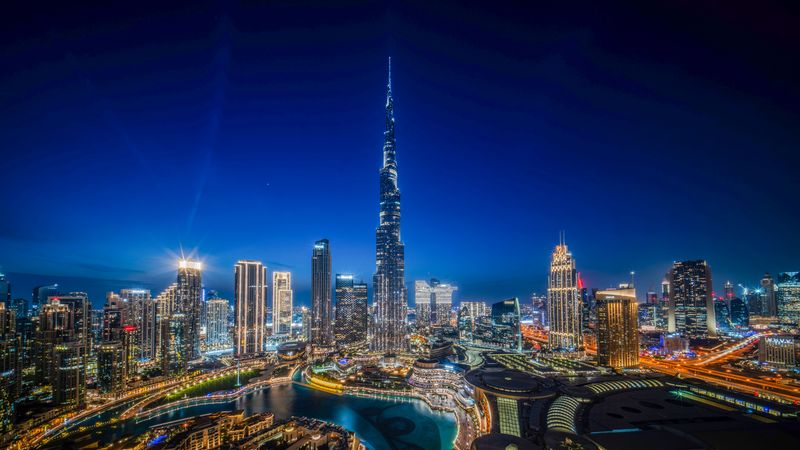
Rising an astonishing 2,717 feet from the desert, this engineering marvel redefined what buildings could achieve. Its Y-shaped floor plan provides stability against desert winds while maximizing views of the Persian Gulf.
Construction required 22 million man-hours and 330,000 cubic meters of concrete—enough to build a sidewalk from Dubai to New York. The building houses the world’s highest swimming pool (76th floor), highest mosque (158th floor), and highest observation deck (148th floor).
During peak construction, 12,000 workers from over 100 countries were on site daily. The tower’s design draws inspiration from the Hymenocallis desert flower, with setbacks spiraling upward to reduce wind forces.
10. Parthenon’s Perfect Proportions
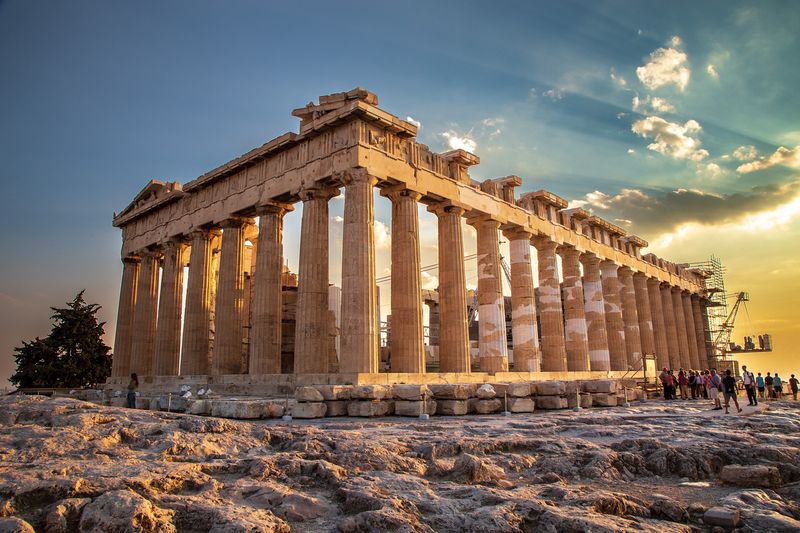
Crowning Athens’ Acropolis for nearly 2,500 years, this marble temple to Athena remains architecture’s greatest optical illusion. Its seemingly straight lines are actually subtle curves—the floor bulges slightly in the middle, columns lean inward, and corner columns are thicker than inner ones.
These refinements correct visual distortions and create an impression of perfect harmony. Modern architects still study its proportions based on the golden ratio.
Though now stark white, the Parthenon originally featured vibrant painted sculptures and gilt bronze accents. The building survived remarkably intact until 1687, when Venetian forces bombarded the Acropolis while Ottoman forces were using it to store gunpowder, causing a catastrophic explosion.
11. Casa Batlló’s Oceanic Dreamscape
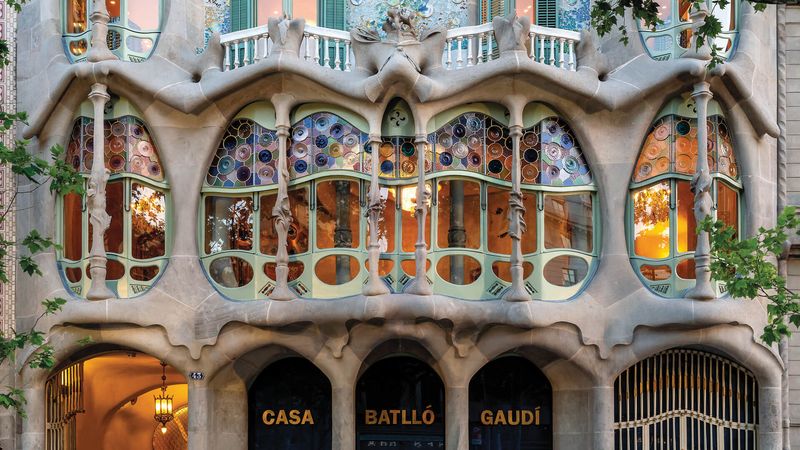
Walking past this Barcelona building feels like stumbling into a fever dream—its undulating facade resembles a seabed of coral and bone, crowned by a dragon-scale roof. Antoni Gaudí transformed an ordinary apartment building into this fantastical creation between 1904 and 1906.
Local residents nicknamed it “House of Bones” for its skeletal quality. Inside, not a single straight line exists—walls curve organically, ceilings ripple like water, and a central stairwell evokes a giant sea creature’s spine.
The facade’s colorful mosaic of broken ceramic tiles (trencadís) changes appearance throughout the day as light shifts, while specially designed ventilation eliminates the need for air conditioning even in Barcelona’s summer heat.
12. The Shard’s Crystal Spire
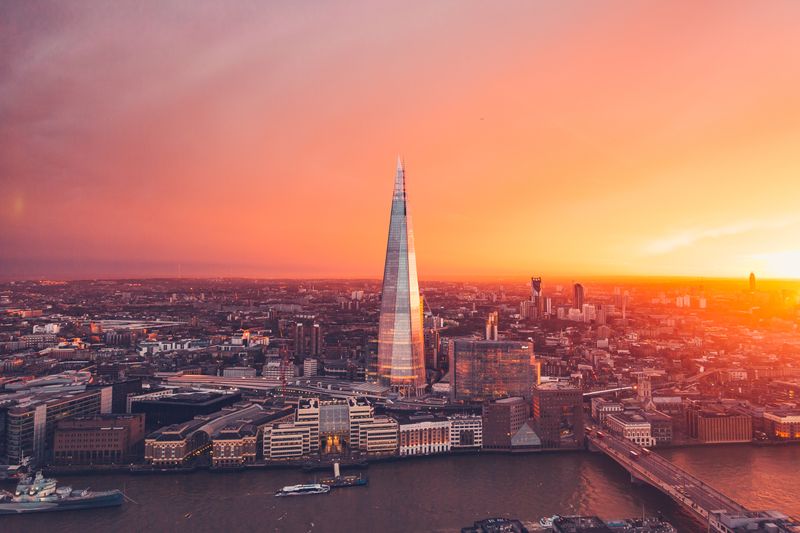
Piercing London’s skyline like a massive glass splinter, The Shard dramatically transformed the city’s profile when completed in 2012. Architect Renzo Piano drew inspiration from church spires and sailing ship masts depicted in 18th-century paintings of the Thames.
The building’s angled glass panels reflect changing skies, causing the tower to disappear into clouds on overcast days or gleam brilliantly at sunset. Its tapering form requires each of its 11,000 glass panels to be cut uniquely.
Builders used a top-down construction method, with foundations and lower floors built simultaneously with upper levels. The technique saved months of construction time but required extraordinary precision—the margin for error was just 2 millimeters.
13. Mont-Saint-Michel’s Tidal Kingdom
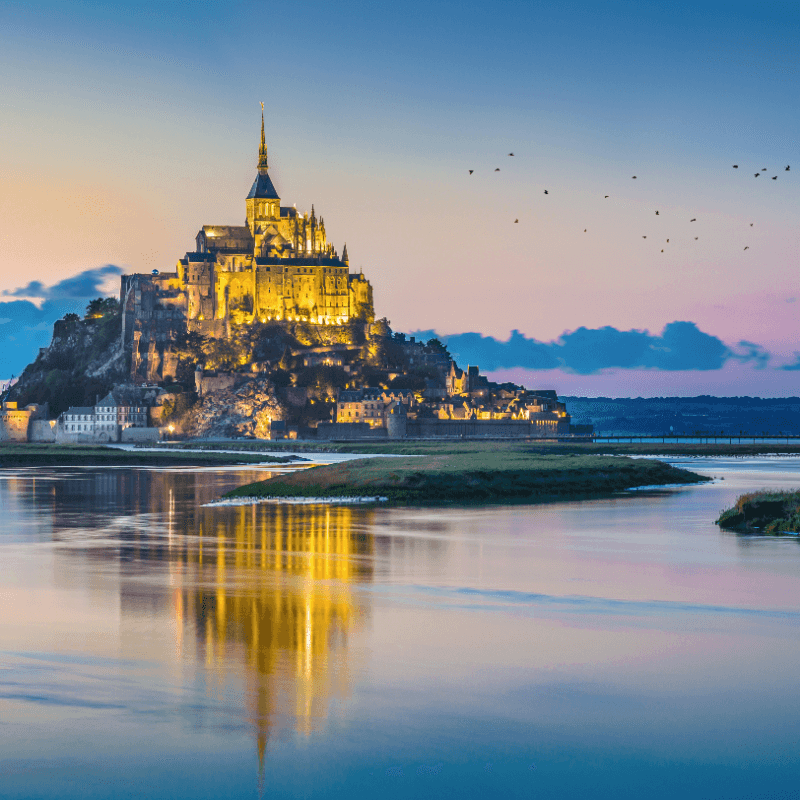
Rising dramatically from a rocky islet off France’s Normandy coast, this medieval abbey appears to float on water during high tide. The fortified village spirals upward, crowned by a soaring abbey church whose spire reaches 500 feet above sea level.
For centuries, pilgrims risked dangerous quicksand and Europe’s highest tidal variations—up to 45 feet—to reach this spiritual outpost. Today, a modern causeway provides safe passage, though the island still becomes completely surrounded by water during exceptionally high tides.
The massive granite structure required ingenious engineering—builders constructed crypts with massive pillars to support the weight of the church above, creating what medieval people called the “Merveille” (Marvel).
14. Lotus Temple’s Blooming Sanctuary
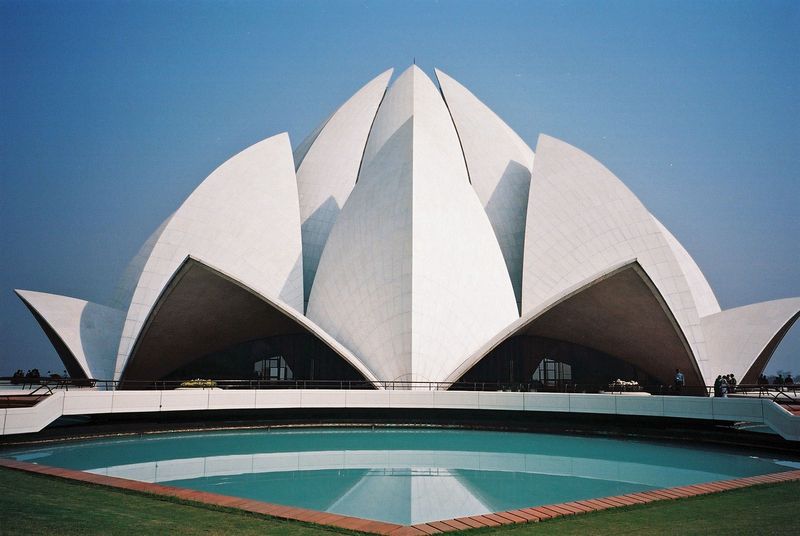
From above, New Delhi’s Bahá’í House of Worship resembles a giant lotus flower opening toward the sky—a symbol sacred to many Indian religions. Completed in 1986, the temple consists of 27 free-standing marble petals arranged in clusters to form nine sides.
Architect Fariborz Sahba faced enormous challenges creating the complex curved surfaces before computer-aided design existed. The building contains no straight lines or angles, yet maintains perfect symmetry.
Nine pools surrounding the structure create the illusion of a flower floating on water while serving the practical purpose of cooling the interior through evaporation. The temple welcomes visitors of all faiths—over 100 million have visited since its opening, making it one of the world’s most-visited buildings.
15. Petra Treasury’s Rose-Red Mystery
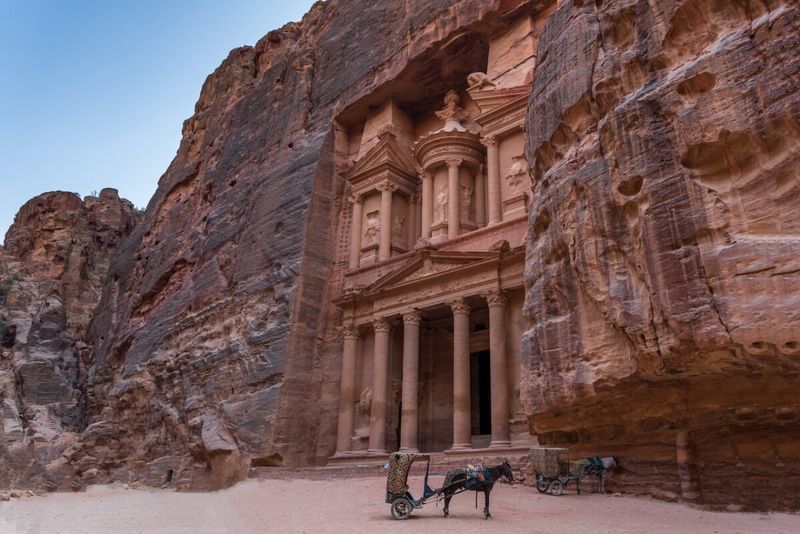
Carved directly into sandstone cliffs over 2,000 years ago, Al-Khazneh (The Treasury) appears like a mirage at the end of a narrow, winding gorge. The dramatic entrance through the mile-long Siq—a natural canyon with 600-foot walls—heightens the reveal as the massive 130-foot facade suddenly comes into view.
Despite its name, the building likely served as a royal tomb rather than a treasury. Local Bedouin legends claimed pharaoh’s gold was hidden inside the stone urn atop the facade, leading to visible bullet marks from treasure hunters.
The rose-red color intensifies at sunset when the stone seems to glow from within. Archaeologists believe the entire facade was once painted in vibrant colors, with traces still visible in protected areas.
16. Guggenheim Bilbao’s Titanium Waves
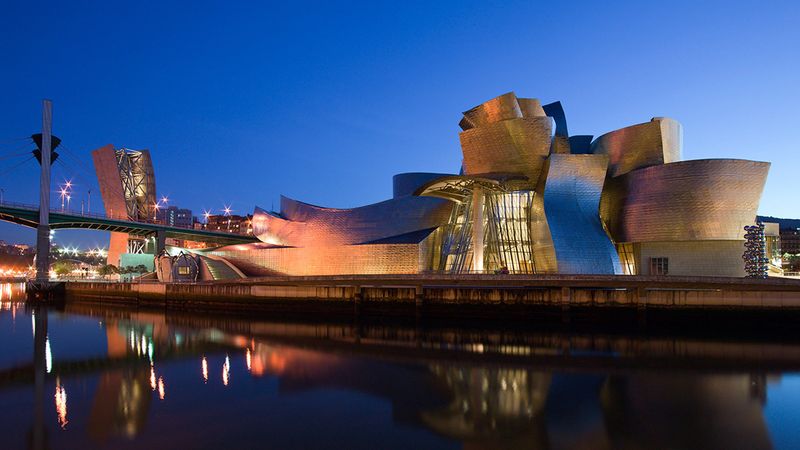
Frank Gehry’s masterpiece looks like a massive abstract sculpture that happens to contain art galleries. Completed in 1997, this undulating titanium-clad structure single-handedly transformed a declining industrial city into a global tourist destination—spawning the term “Bilbao Effect” in urban planning.
The building’s seemingly random curves were actually precisely calculated using advanced aerospace software. Over 33,000 ultra-thin titanium panels cover the exterior, changing color with weather conditions—silver in sunlight, gold at sunset, blue when overcast.
Inside, soaring galleries connected by curved walkways and glass elevators create spaces perfectly suited for large-scale contemporary art. The structure appears completely different from every angle, rewarding visitors who circle its perimeter.
17. Catherine Palace’s Azure Elegance
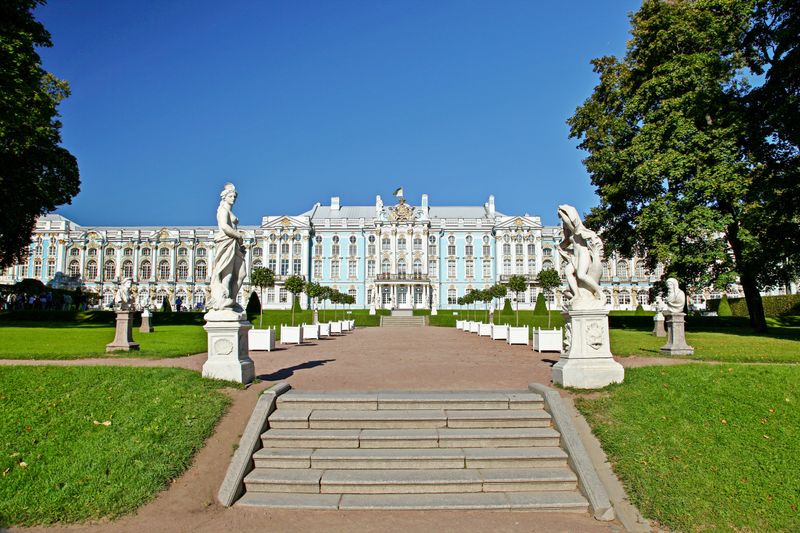
The breathtaking blue-and-white facade stretches nearly 1,000 feet, making this Rococo masterpiece outside St. Petersburg one of the largest palaces in the world. Empress Elizabeth commissioned the expansion of her mother Catherine I’s modest palace, demanding something that would outshine Versailles.
The legendary Amber Room—once called the “Eighth Wonder of the World”—featured walls covered entirely in amber panels backed with gold leaf. Nazi forces dismantled and stole these panels during World War II; they remain missing despite decades of searching.
After German occupation left the palace a burned-out shell, Russian craftspeople spent decades meticulously restoring it using old photographs, surviving fragments, and traditional techniques—a testament to cultural resilience.
18. Cologne Cathedral’s Gothic Persistence
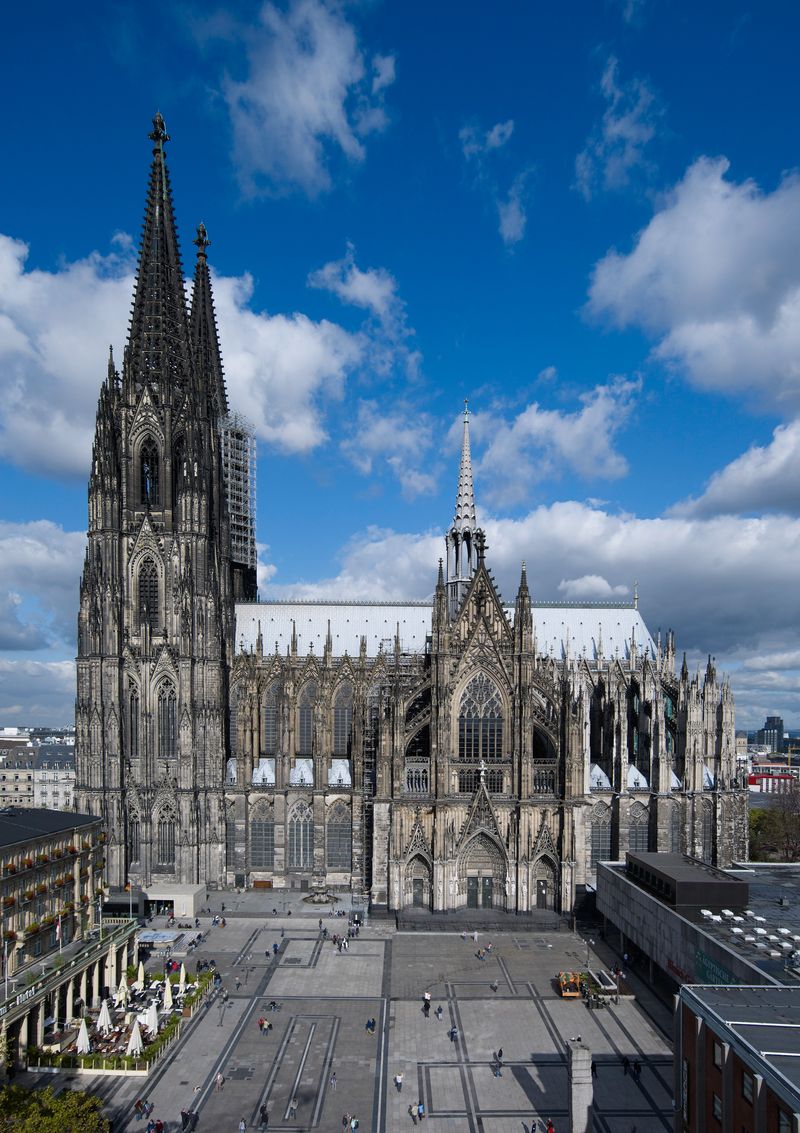
Started in 1248 but not completed until 1880, this architectural marathon represents the longest cathedral construction project in history. Its twin spires soar 515 feet—the tallest in Europe until modern skyscrapers—and were the tallest structures in the world when completed.
The cathedral miraculously survived 14 direct hits from Allied bombing during World War II while surrounding areas were flattened. Some attribute this to its distinctive profile serving as a navigation landmark for pilots.
The building contains over 10,000 square meters of stained glass, including the contemporary south transept window designed by Gerhard Richter in 2007. This pixelated pattern of 11,500 colored glass squares has become as famous as the cathedral’s medieval windows.
19. White Temple’s Surreal Afterlife

Wat Rong Khun isn’t an ancient shrine but a contemporary art project started in 1997 by Thai artist Chalermchai Kositpipat. This blindingly white structure represents Buddha’s purity, while embedded mirror fragments symbolize Buddha’s wisdom shining throughout the universe.
The bridge approaching the temple crosses over a sea of reaching hands—representing desire and suffering in hell. Inside, traditional Buddhist imagery shares space with pop culture references including Superman, Neo from The Matrix, and even Angry Birds.
When a 2014 earthquake damaged the temple, Kositpipat initially announced he would demolish it rather than repair it. He later changed his mind, seeing the cracks as adding character to his ongoing creation, which he expects will take 90 years to complete.
20. Bibliotheca Alexandrina’s Modern Revival
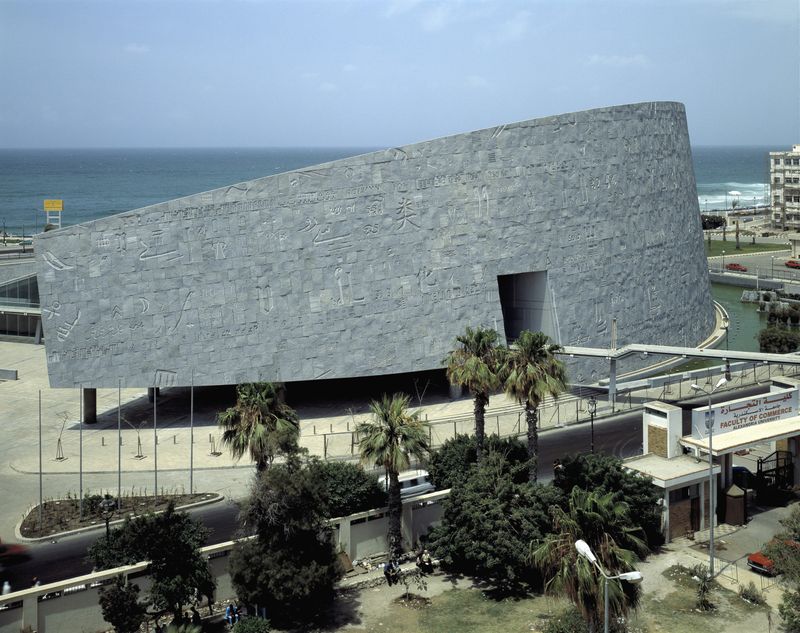
Rising like a massive sundial from the Mediterranean coast, this contemporary library resurrects the spirit of the ancient Library of Alexandria destroyed over 1,600 years ago. The main reading room spans seven terraced levels beneath a 160-foot-diameter glass roof tilted toward the sea.
The building’s exterior features carvings representing 120 different writing systems from throughout human history. A granite wall surrounding the cylindrical structure is inscribed with characters from every known alphabet.
Four underground floors descend below sea level, requiring innovative engineering solutions to prevent water infiltration. The complex houses specialized libraries, museums, a planetarium, and the world’s only backup of the Internet Archive—a digital library of websites and other cultural artifacts.
21. Dancing House’s Architectural Tango
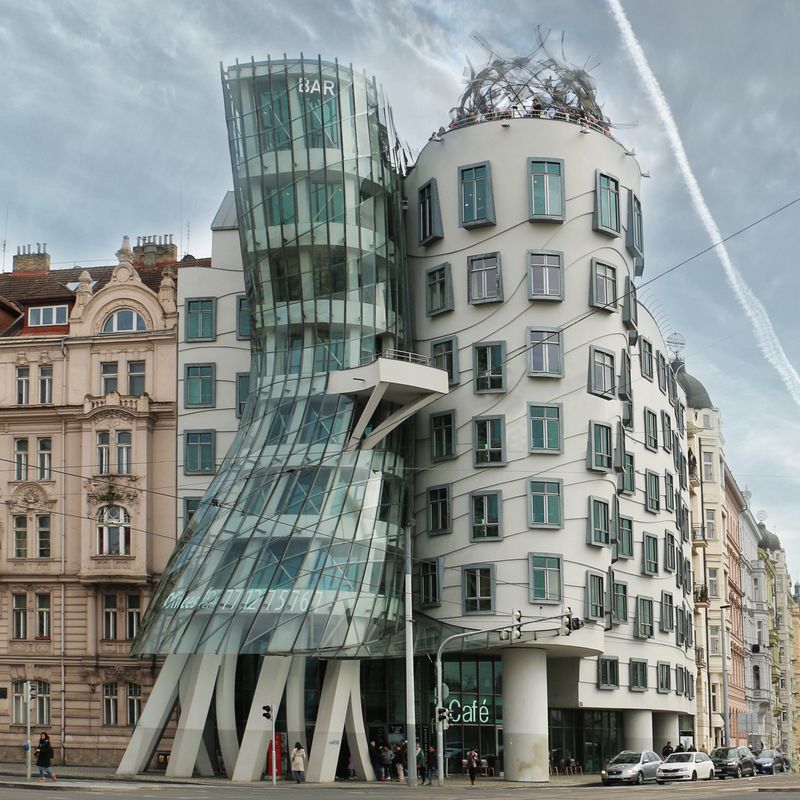
Prague’s most distinctive modern landmark looks like a building caught mid-twirl on a dance floor. Nicknamed “Fred and Ginger” after the famous dance duo, this deconstructivist gem features two towers—one a solid cylinder, the other a glass tower that narrows at the middle like a woman’s waist.
Completed in 1996, the building stands on a site bombed during World War II that remained vacant for decades. Architects Frank Gehry and Vlado Milunić deliberately created something that would contrast with Prague’s Baroque and Art Nouveau architecture.
Ninety-nine concrete panels of different shapes and dimensions support the structure, with each window uniquely sized and positioned. Former Czech president Václav Havel, who lived next door for decades, strongly supported the controversial project.



